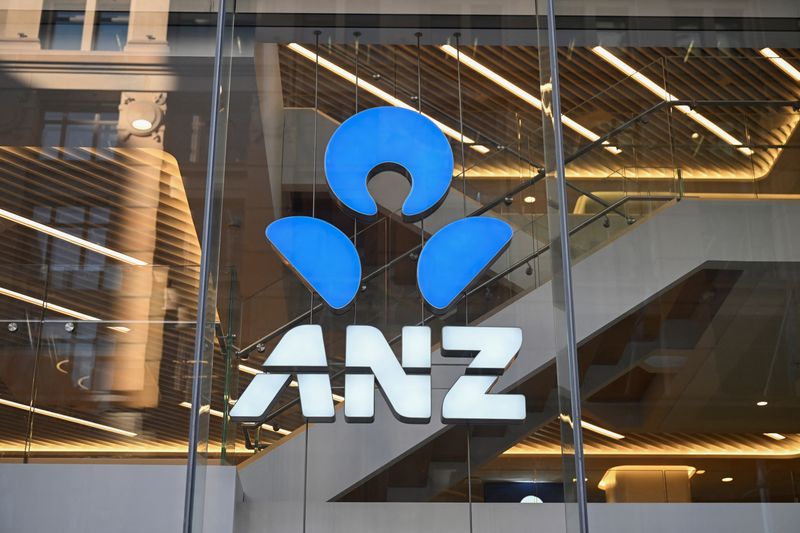By Byron Kaye and Sameer Manekar
SYDNEY (Reuters) -ANZ, Australia's No. 4 lender by mortgages, said annual profit tumbled as fierce competition ate away margins while late loan repayments surged, underscoring the pressure on banks and their customers as they hold out for an interest rate cut.
The country's seventh-largest listed company by market value said cash profit dipped 8% to A$6.73 billion ($4.49 billion) for the year to end-September, just missing a Visible Alpha consensus of A$6.82 billion, as inflation pushed up expenses while loan margins narrowed.
The result capped a week of shrinking profit announcements from three of Australia's four biggest banks, which have been sacrificing either market share or margins for more than two years to survive a price war fuelled by elevated interest rates and living costs.
ANZ also included a stark metric illustrating the strain on borrowers even as inflation starts to slow: loan repayments more than 90 days late leapt 47% for the bank as of Sept. 30, from a year earlier, hitting their highest level since 2020.
Larger rivals Westpac and National Australia Bank (OTC:NABZY) also reported the highest levels of late loan repayments since 2020, while posting lower annual profits on Monday (NASDAQ:MNDY) and Thursday respectively.
Commonwealth Bank of Australia (OTC:CMWAY), the biggest lender, also reported the highest 90 plus-day late repayments since 2020 when it reported annual results in August.
All of the banks said they had received more applications for hardship assistance, although some including ANZ noted requests had stabilised since mid-year.
"There's lots and lots of signs of stress and people are doing it really hard," ANZ CEO Shayne Elliott said in an interview published by the bank in tandem with its results.
"Does that mean we're going to get a rate cut ... this side of Christmas? Early in the new year or later next year? I don't know."
While central banks in the U.S., Europe and New Zealand have begun cutting interest rates, Australia has kept rates on hold for the last year as it grapples with stubbornly persistent inflation and a strong employment market.
ANZ and the other big Australian banks have said they expect the next rate cut in February 2025, which would be the first in half a decade.
'SOFT RESULT'
Shares of ANZ were up 0.6% by midsession, undershooting a 1% gain on the broader market as analysts digested a result that fell just short of forecasts but was complicated by the close of the company's buyout of bank assets from Suncorp.
"Overall a soft result that missed market expectations, despite the lower quality beat to markets revenues," Citi analysts said.
ANZ proposed a final dividend of 83 Australian cents per share, below 94 Australian cents a share last year. It was, however, in line with market expectations.
The bank's net interest margin, a key measure of profitability, fell 13 basis points from last year to 1.57%. Its common equity tier 1 ratio, a measure of spare cash, slipped more than a percentage point to 12.2% as of the end of the financial year.
Elliott said ANZ had beefed up a review of how it manages non-financial risk after wide-ranging misconduct allegations sparked an Australian Securities and Investments Commission investigation and prompted the Australian Prudential (LON:PRU) Regulation Authority in August to increase the amount of spare cash the bank must keep on hand.
The review "shouldn't result in a really material uplift in cost", Elliott told analysts on a call.
"It's more about cultural embedment and leadership from me and my team. We are making progress."

Elliott added that he did not know when ANZ would be able to show APRA it was ready to remove the additional cash obligation, but "it is not going to be in FY25."
($1 = 1.4972 Australian dollars)